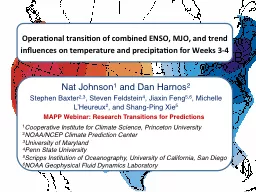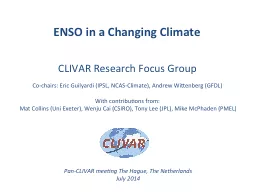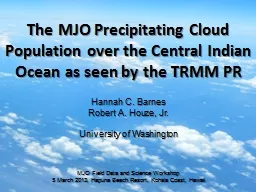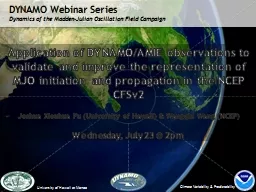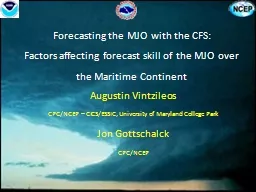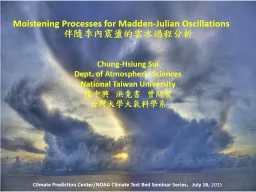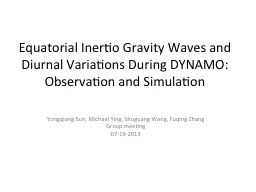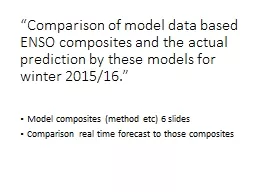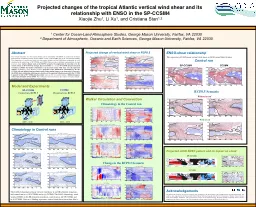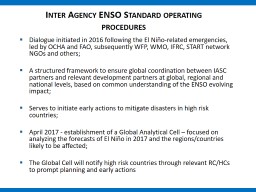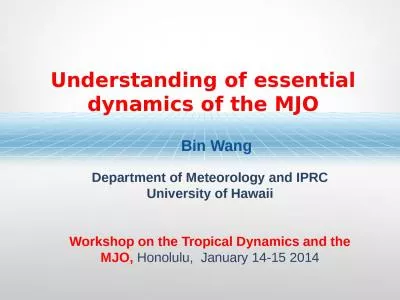PPT-Operational transition of combined ENSO, MJO, and trend inf
Author : min-jolicoeur | Published Date : 2017-03-31
Nat Johnson 1 and Dan Harnos 2 Stephen Baxter 23 Steven Feldstein 4 Jiaxin Feng 56 Michelle LHeureux 2 and ShangPing Xie 5 1 Cooperative Institute for Climate
Presentation Embed Code
Download Presentation
Download Presentation The PPT/PDF document "Operational transition of combined ENSO,..." is the property of its rightful owner. Permission is granted to download and print the materials on this website for personal, non-commercial use only, and to display it on your personal computer provided you do not modify the materials and that you retain all copyright notices contained in the materials. By downloading content from our website, you accept the terms of this agreement.
Operational transition of combined ENSO, MJO, and trend inf: Transcript
Download Rules Of Document
"Operational transition of combined ENSO, MJO, and trend inf"The content belongs to its owner. You may download and print it for personal use, without modification, and keep all copyright notices. By downloading, you agree to these terms.
Related Documents

